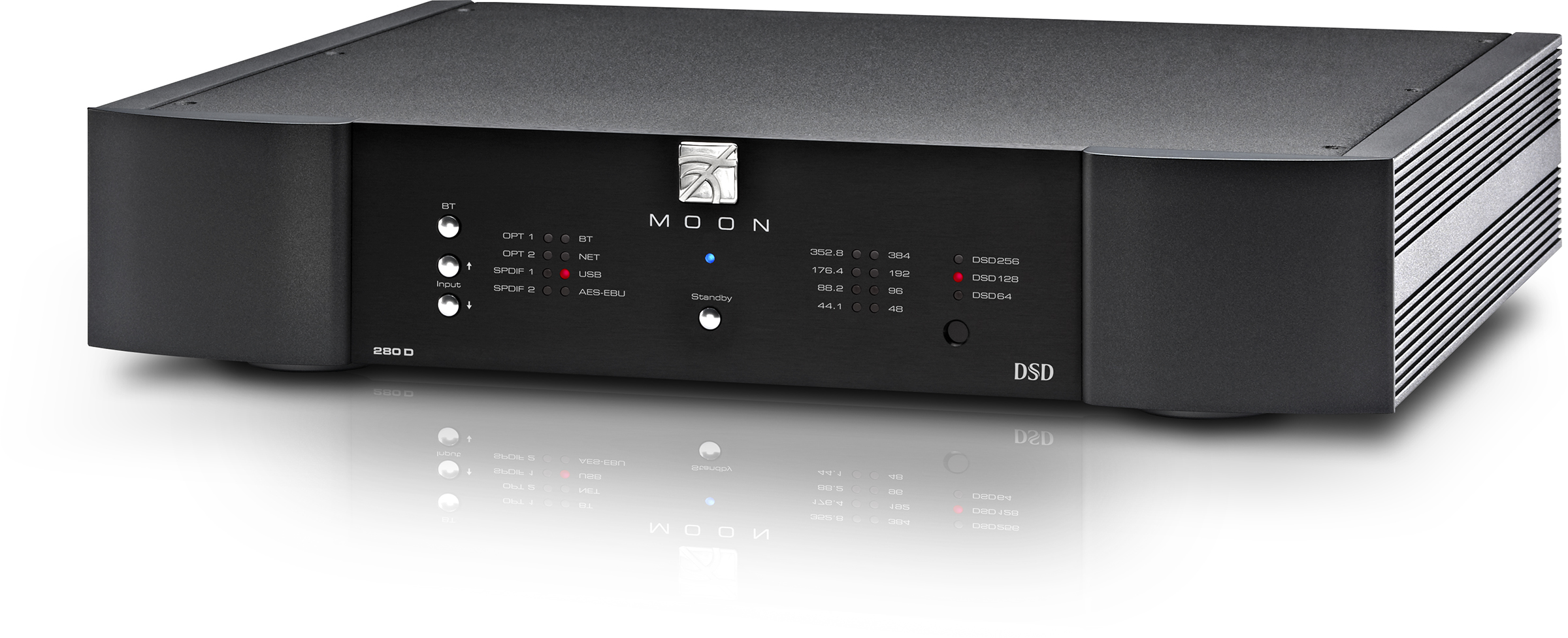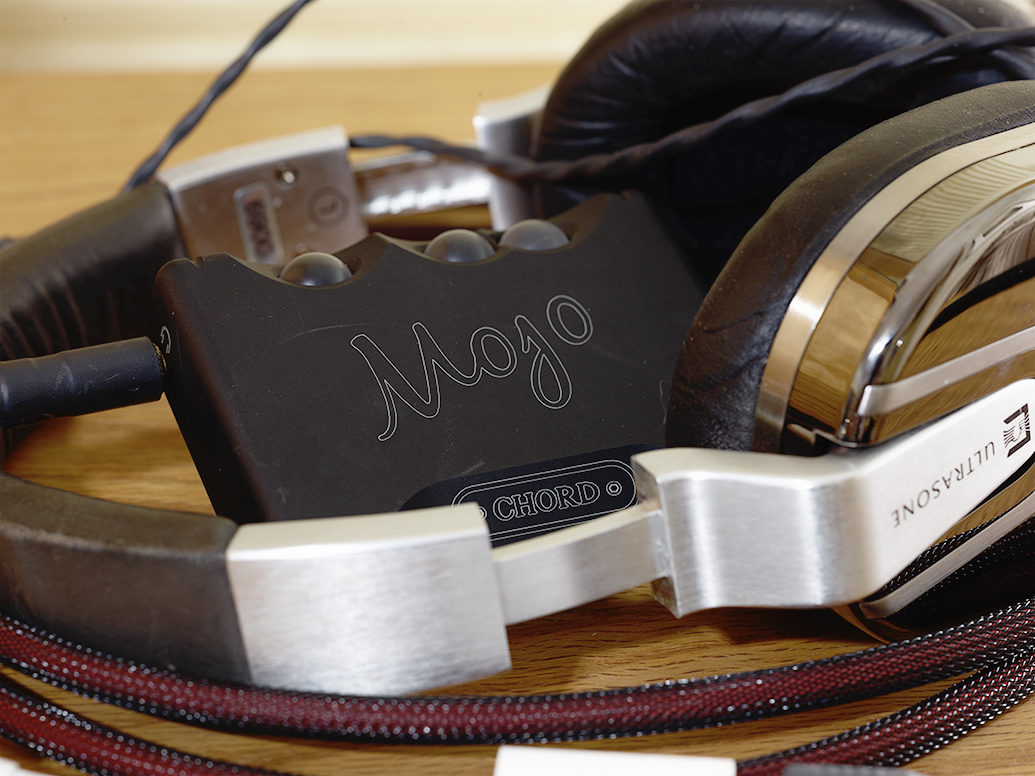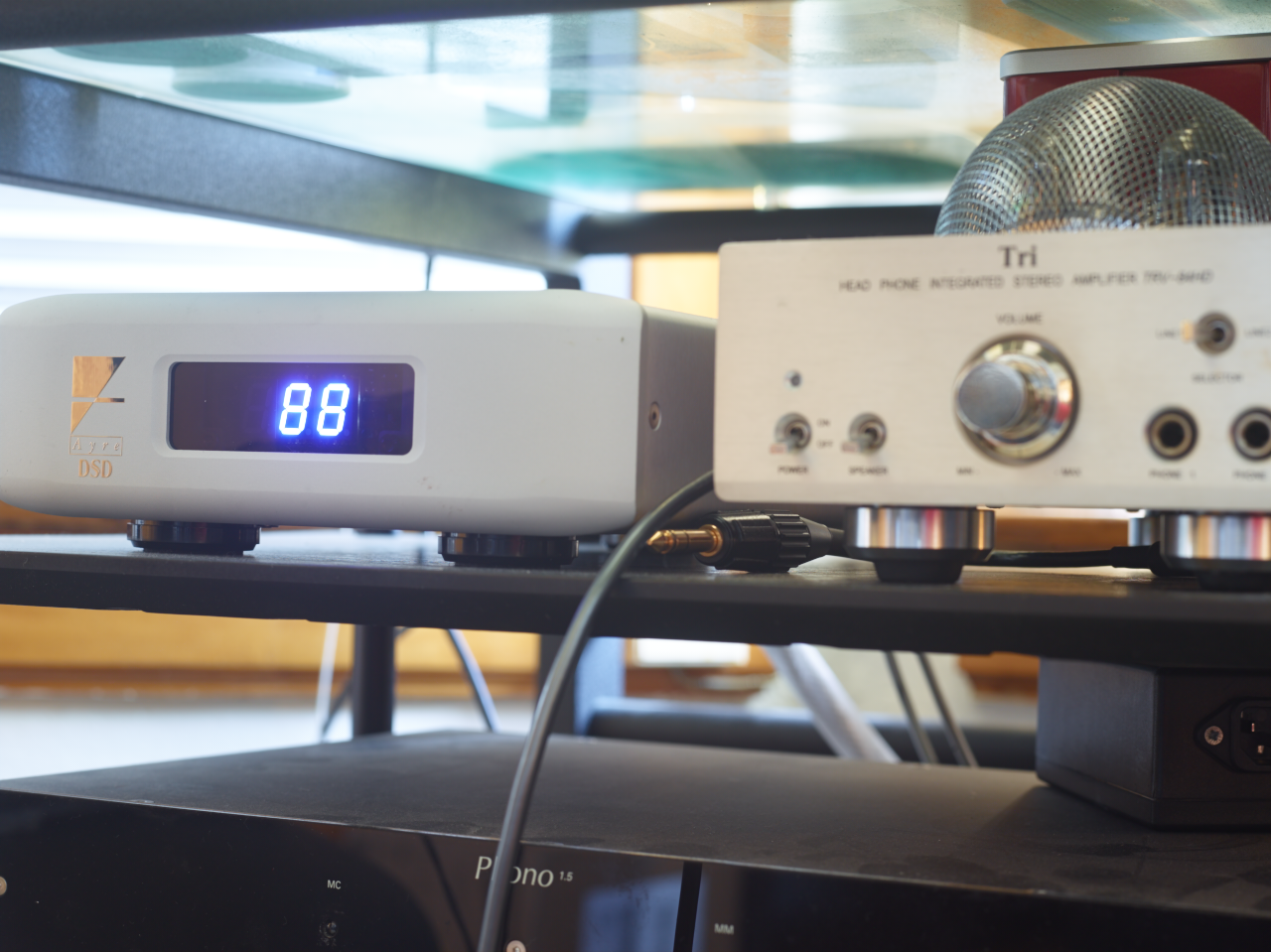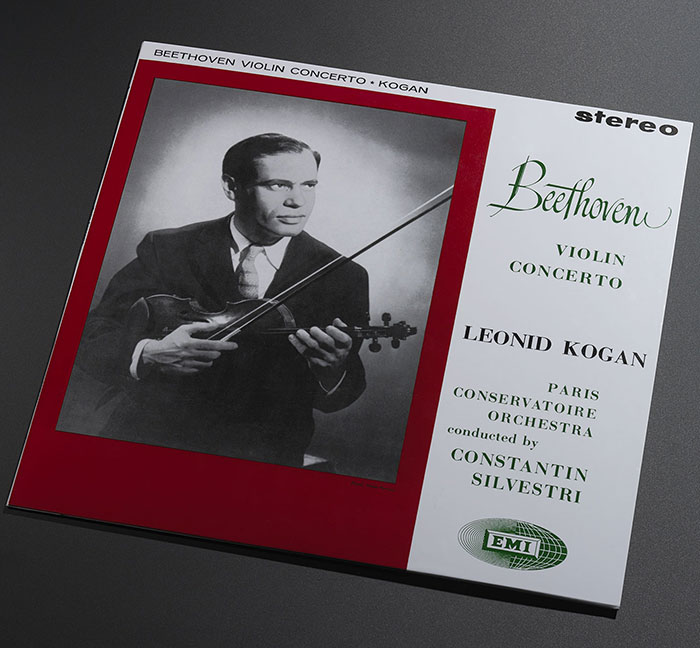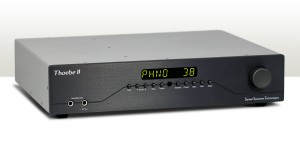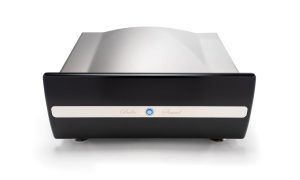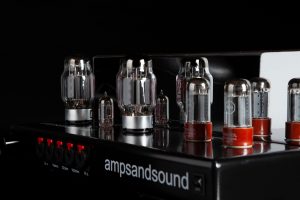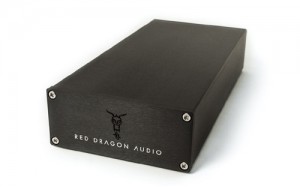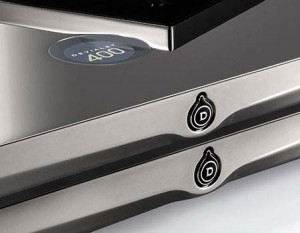"Oh help me, please doctor, I'm damaged
There's a pain where there once was a heart
It's sleepin, it's a beatin'
Can't ya please tear it out, and preserve it
Right there in that jar?"
—"Dear Doctor" by The Rolling Stones
So, first, I wanted apologize for jamming two sets of commentaries, the latter of which is kind of a review, into one article; however, I've been experimenting a lot with things that I already own, or purchasing more budget-oriented equipment, after careful thought given that I don't have a huge audio budget these days and that I'm really not sure where I'll be living and how much room I'll have in a year from now. So I'm going to comment on two successful experiments one of which required no new investment and the other only cost around $100.
My first experiment centered on the fact that I really had no practical way of listening to music in high-fidelity without sitting in a desk chair in my kitchen or running a very long headphone cable out to my easy chair in the main room and going back and forth to swap CD's, change downloads, or just pick a different station on my Magnum Dynalab MD 807 T Internet tuner. I thought about running some inexpensive speaker cable out to a pair of bookshelf speakers in my main room so I could get better fidelity from my home office system (for now my "main" system) in the big room, but even going with the most affordable equipment I could get, including cables and a speaker switchbox, that would actually satisfy me would cost about $1500, which is just way too much for a "what if" situation, for one year.
Then it occurred to me that I could use my 11" MacBook Air as a music source for CD-resolution ALAC files (or maybe sometimes 24/88.2 or even 24/192) if I bought a second Woo Audio WA7, particularly with the new tube power supply for it; and even though that seemed like a surer bet, it would still cost around $1300.00, which was just too much for something that might become redundant in the next twelve months (again). I may actually buy the tube power supply for the WA7 that I already have at my place of business, but that's a different set of circumstances and depends a lot on any bonuses I might get over the next six months. So, again, I had to think even more frugally.
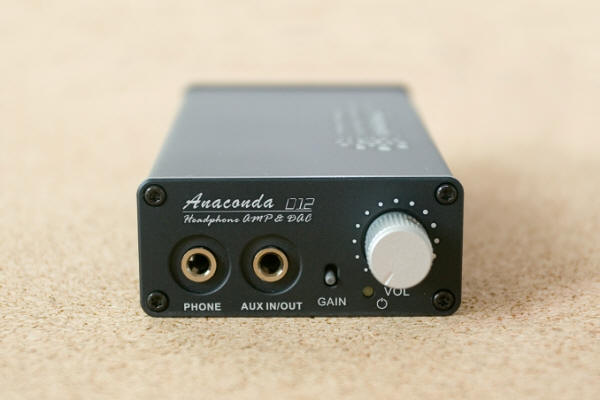
At that point, I did remember that I had an iBasso D12 Anaconda 16-bit/44.1 and 48kHz DAC and headphone amplifier in my audio goody cabinet along with a one-meter Locus Design Polestar mini-USB cable and an extra Moon Audio Silver Dragon mini plug termination that I could use with my Silver Dragon HiFiMan HE-5LE headphones, which are surprisingly easy to drive particularly with the D12 Anaconda's gain set to high, resulting in a rather lush, warm sound with plenty of detail and air as long as I don't try to play heavy metal and stick to nothing higher than a lossless CD rip (with error correction on) using a spare Apple SuperDrive I had that connects to the MacBook Air via USB. I even had a fair bit of music already on my MacBook Air (with 256GB of flash memory as a sort of a hard drive) and a fully licensed copy of Audirvana Plus all ready to go.
Although my initial impression was that the sound was a little astringent, particularly with classical piano, it didn't take that many hours of recharge, warm up, and re-break in of the D12, using the Polestar mini-USB cable as both a source of data and as a way to charge the D12 Anaconda, to realize that the D12 and the HE-5LE's made a very good combination, particularly with that Silver Dragon headphone cabling; and, of course, the Polestar has always sounded lovely. I even use one at work with my WA7. So now I'm able to sit in my easy chair and play music through headphones in very high fidelity, while I play on the Web or write while being able to switch from one album to another, all for free just because I kept these mostly discontinued parts. I'm even going to try Spotify or at least iTunes Internet radio (NOT iTunes Radio); although, I do imagine that my MD 807 T with my Tri headphone amp and a long extension cable will blow that away. So it goes.
I do want to make it very clear that using my home office system as a "main" system really does sound much better than my little MacBook Air-based arrangement; and, of course, I can actually play vinyl out loud on that. However, the 11" MacBook Air is tremendously convenient and even now I'm listening to Post Scriptum by the Wolfert Brederode Quartet through my HE-5LE's and really enjoying it as I compose this article. I do have some redeemed .mp3 downloads that I got with vinyl LP's and a few iTunes Plus downloads that I just happened to try at one point, but must confess that those are below the bar for me. I really need to get at least the full-CD-resolution files going to enjoy myself, without—at that point—much complaint.
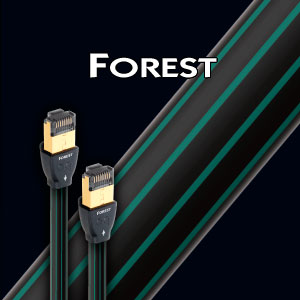
So onto part two of this double article, the AudioQuest Forest Ethernet cables. You might wonder why did I decide to buy these? Well, I had heard through the grapevine that AudioQuest was making Ethernet cables and that they were supposed to be rather amazing. I even heard, although I think this might be urban myth, that replacing all of your regular CAT5 patch cables with AudioQuest Ethernet cables would make your stereo sound better even if you weren't streaming anything. I have my doubts about that, but I'm willing to try it given that I do stream a lot of video*, not to mention audio with my Magnum Dynalab MD 807 T Internet tuner. After I inserted the 3.0-meter Forest Ethernet cable between my cable modem and my previous-generation Apple Airport Extreme (boosted by an Airport Express in the kitchen), I noticed an immediate improvement in the image quality of Hulu Plus. I mean, I do have a 50mbps Internet connection which stays strong and fast via my wireless home network; but just the fact that Apple TV, through which I get Hulu Plus, connects wirelessly to the Airport Extreme and the image quality still made a dramatic improvement with the Forest going from my modem to my router really shows how much better these, "audiophile-quality Ethernet cables", can make things. There were far fewer digital artifacts, much brighter, crisper colors, overall better sharpness, and a creamy texture to the image quality that my purple Transparent HDMI cables helped to bring out once it was actually there.
Going to Amazon Prime video via some circuitry built into my Sony HDTV, using a 1.5 meter run of the Forest Ethernet cable plugged directly from the Sony HDTV into my Apple router, does show improvement as well; however, I think that Apple TV offers the best overall image quality, so the Amazon Prime video, while better, gets limited by the quality of the circuitry in the Sony HDTV even though nothing about it is wireless. If only Amazon Prime would cut a deal with Apple … (but you never know what's going to happen). I did get a chance to try my Magnum Dynalab MD 807 T Internet tuner even though it's connected wirelessly through the Airport Express booster to the Airport Extreme, which in turn does use the 3.0-meter Forest Ethernet cable to get to the modem. I'm even listening right now, through the "main" stereo, to BBC Radio 3 and have to say that it sounds fantastic. There's just tremendous depth to the sound, ample dynamic range, a broadening of the acoustic spectrum (lows to highs), and just a general perception that a fog has been lifted from in front of the stereo when I use the Internet tuner, all because of that one Ethernet cable. Soundstaging, both left to right and front to back, sounds more realistic as well. It just makes my Internet connection to the BBC in London sound that much more like playing a CD in my little one-tube Tri CD player.
Of course, I want to know what the top of the line Diamond Ethernet cable sounds like with its battery-powered DBS dielectric circuit; but the most that I could afford, which is still well worth the investment, is the second to least expense Forest, sitting between the Pearl at the entry level and the middle-place Cinnamon, which seems to get good comments. I wrote to AudioQuest to see if could borrow a 1.5 meter and 3.0 meter Diamond Ethernet cable but never heard back from them. Again, so it goes.
So, getting back to this whole urban myth thing about the AudioQuest Ethernet cables making your stereo sound better even when you're not streaming, I had to try it just to see. So I made sure that nothing in my house was streaming (apart from the normal Wi-Fi connections to my computers and iDevices) and that my 27" iMac, connected indirectly to my Rega DAC, was actually turned off. Then I picked a CD more or less at random (Ahmad Jamal's Blue Moon), putting it into my Tri CD player and switching the input of my integrated amplifier over to the CD player. I gave it a minute to read the disk and gather the information it would need to play, then pushed the, "Play", button, at which point Ahmad Jamal just exploded out of my stereo system in a way I've never heard before (at least not from my "little" system). The sound was incredibly open, the bass had tremendous punch, and there was detail in the upper midrange and treble that, without sounding bright, removed any tendency of Blue Moon to sound smeared. Apparently, those better Ethernet cables really do make a difference (although I'd have trouble convincing an objectivist that I didn't need to be on antipsychotics in saying so). So I got that much more for my money!
At this point, there's really nothing left to say except that, if you're an audiophile and you have Ethernet cables in your home, either for music streaming or some other purpose, consider upgrading to at least the Pearl if not the Forest if not the Diamond (or something in between), because it really does make a very impressive empirical difference for, in my case, about $100 for the two AudioQuest Forest Ethernet cables. I'm not sure there's anything else left to say…
Kindest regards,
Andy
(*) I quit renting physical discs from Netflix because I never played them; but I do have a streaming account with Netflix, with Hulu Plus, with Amazon Prime, and of course any downloads I want to rent through the iTunes Store via Apple TV. I do still collect DVD's and Blu-ray discs, such as my Stanley Kubrick DVD box set (which was supervised by Kubrick, NOT the Blu-ray set that was issued after his death without his supervision) and my Criterion Collection edition of The Quatsi Trilogy by Godfrey Reggio on Blu-ray, because uncompressed video does look the best.




